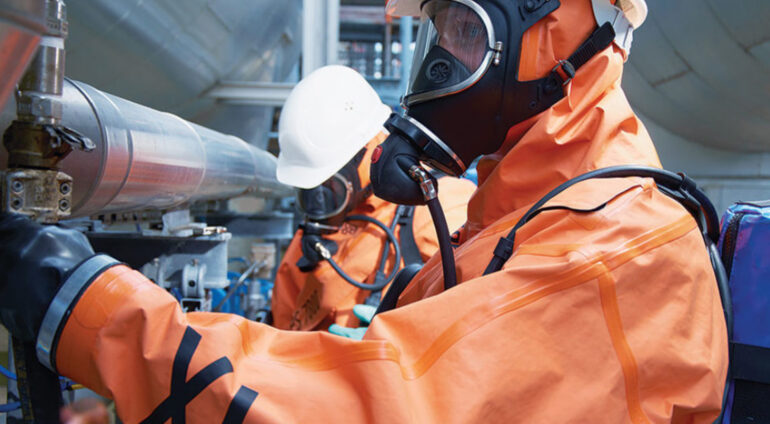JOIFF H2S
The aims of the training are to ensure that the delegate gains:
- The required knowledge and understanding of the particular hazards and properties of H2S.
- The appropriate emergency response actions to take should a H2S related incident arise.
Learning Outcomes:
On successful completion of the course, delegates will be able to explain:
- Hydrogen sulphide – how it is formed and where it is found.
- Other names used to describe H2S.
- Properties and characteristics of H2S.
- Parts per million (ppm) as a measurement parameter.
- Occupational exposure limits to H2S.
- Factors affecting individual susceptibility to H2S.
- Types of detector equipment.
- Types of respiratory equipment.
- Pre-use checks of personal detection devices and EBA.
On successful completion of the course, delegates will be able to demonstrate:
- Operating personal H2S detection equipment (including checks).
- Responding to an alarm.
- Donning & operating (including checks) an escape breathing apparatus (EBA) with a mask within 30 seconds.
- Donning & operating (including checks) an EBA with a hood within 30 seconds.
- Connecting to a pressurized cascade breathing system with an activated EBA which has been donned correctly.
- Disconnecting from a pressurized cascade breathing system with an activated.
- EBA which has been donned correctly.
Methodology of identifying Competence:
Delegates are required to be assessed against the learning outcomes using direct observation and oral and/or written questions.
Certification and Validity:
Students who have been assessed as successfully completing this course will receive a JOIFF Accredited certificate of competence which will be valid for three (3) years.
Target audience:
The course is designed for individuals intending to work on Offshore/Onshore installation which forms part of a common Safety induction process.
Pre-requisites:
All personnel who participate in such activities must be physically and mentally capable of participating fully.

